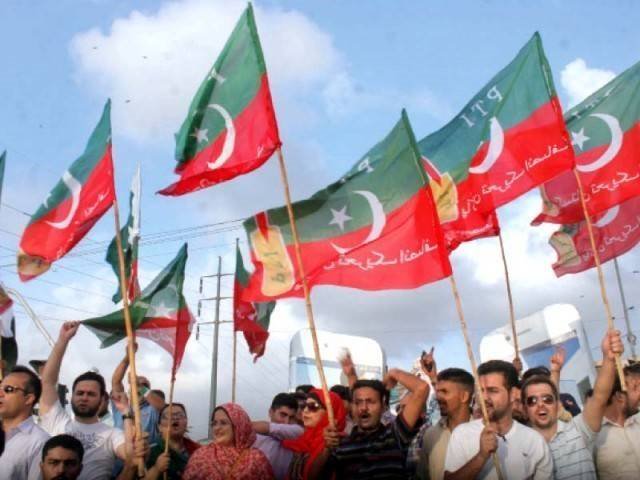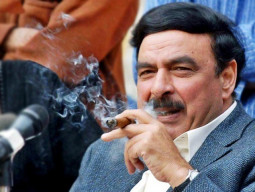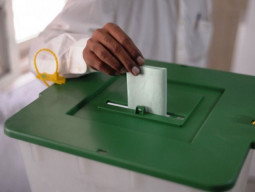
Most competitive election ever? Most managed election ever? Pick your favourite definition, but there’s no denying that politics in Pakistan is on the verge of a strange, peculiar and almost a weirdly alien transformation. Status quo? Yes it is about to go out of the window. To be replaced with? ‘Ay, there’s the rub!’ as Shakespeare’s Hamlet says. That’s where the plot thickens.
But first, the lay of the land. One gruelling campaign, three convictions and many surveys later, the electoral landscape looks something like this:
a. The PTI is the favourite (ladla) to win nationally and form a government at the Centre. It is also billed to win again in Khyber-Pakhtunkhwa and rule alone or with a coalition. The PPP will get Sindh while the newly-minted Balochistan National Party will be in a solid position to dominate the provincial government.
b. The PML-N may yet form the government in Punjab but the PTI is breathing down its neck and could run away with a possible coalition in Lahore.
c. All surveys are hinting at a fragmented mandate in Punjab and the Centre.
Beyond this conventional — and unsurprising — wisdom, things get a bit more interesting. The following elements could upend this conventional wisdom and make the best laid plans go awry:
1. Punjab throws a surprise in favour of the PML-N
2. Punjab throws a surprise in favour of the PTI
Rather simplistic, you might say. True. But the impact of this surprise — and its magnitude too — lies in the details that may emerge from within the folds of this carefully crafted conventional wisdom. And if you were to zero in on where the surprise could be hiding — perhaps in plain sight — it would be somewhere in the vicinity of Central Punjab.
Yes the same Central Punjab that has been recognised as the real battleground by the excellent and comprehensive survey led by Dr Ali Cheema and published in the Herald magazine. And it is to this Central Punjab that we turn now in search of a possible surprise.
It is one of the most electorally fertile regions of Punjab boasting 21 districts and 82 National Assembly seats. It is the Panipat of Pakistani politics — the battleground that may essentially decide the shape of this election. Populous and prosperous, this region embraced the PML-N in a bear hug and held tight through the term. This is hard core Sharifs territory. The breakup of district-wise seats goes like this: Sargodha (5 NA seats), Khushab (2), Mianwali (2), Bhakkar (2), Faisalabad (10), Chiniot (2), Jhang (3), Toba Tek Singh (3), Gujranwala (6), Hafizabad (1), Gujrat (4), Mandi Bahauddin (2), Sialkot (5), Narowal (2), Lahore (14), Sheikhupura (4), Nankana Sahib (2), Kasur (4), Okara (4), Sahiwal (3) and Pakpattan (2).
The bear hug has loosened now and the PTI has wriggled its way into the embrace. Surveys still place the PML-N ahead of its rival but not by much. With South Punjab (46 NA seats) looking like going solidly in PTI’s favour and North Punjab (13 NA seats) almost split in half, the PML-N has to win big in Central Punjab in order to rewrite the glum predictions of its fate.
How big? That’s the key question. But before diving into the numbers, let’s look at two key province-wide factors as identified by the latest Herald survey: 1) Undecided voters, 2) Turnout.
The survey says 14 per cent of the respondents remain undecided in Punjab. This means in closely fought contests (which most are), this huge chunk of undecided voters could decide the outcome — outcomes that could possibly decide the fate of the elections. It is generally believed that undecided voters tend to make up their minds as the elections draw near. Has there been any major event or development after the survey that could have swayed these undecided voters towards the PML-N or away from it? Yes, the jailing of Nawaz Sharif, Maryam Nawaz and Capt (retired) Safdar. This constitutes one of the biggest ‘unknowables’ of the electoral factors since anecdotal evidence only goes so far. If a majority of the undecided people opt for the PML-N in Punjab they could gift the party a surprise it is thirsting for — a dividend of seats rich enough to make a government in the province at the least.
But for this to happen, voters actually need to come out and vote in numbers greater than ever before. In Punjab, this is the other big test for the PML-N. The party voter may be demotivated realising that the PML-N has less chances of success than the PTI, and this may turn into a self-fulfilling prophecy if he prefers to stay home. But on the flip side, if the PML-N can mobilise its famed electoral machinery and get its voter out, this spike in turnout could translate into victories in tight races.
The problem is that the same formula also applies to the PTI both in terms of undecided voters and turnout. That’s why it’s too close to call.
And so we return to the question: How big will the PML-N need to win in Central Punjab to spring a surprise? In 2013, the PML-N’s complete domination of the region was reflected in the result: it won 74 of the 83 seats. The PTI won 3.
Today the situation is vastly different. Surveys and assessment from the ground in these constituencies throws up these estimates for the 21 districts and 82 seats of Central Punjab:
The PTI (33), the PML-N (30), Independents (5), the PMLQ (2), too close to call (12). For the PML-N to defy all predictions, it would need to win at least 50 seats from this region. Add another 13 seats from South Punjab and six from North Punjab and its total tally for the province would go up to 70-odd seats. Add to the tally six seats from K-P, two from Balochistan and one from Sindh and the PML-N crawls up to the figure of 80 seats in the National Assembly. If it reaches this mark, it can possibly attempt to form a government at the Centre with the PPP as the coalition partner.
If we flip the scenario and the PTI romps home with fifty seats from Central Punjab, the situation could get rather interesting and surprising. Add 15 seats from South Punjab and four from North and the total number of seats from Punjab could round off at 80 also. Now bring in the best case scenario of 30 seats from K-P, three from Sindh and the PTI powers up to a whopping 110 seats. If the PTI can touch the 100-seat mark it would be in a comfortable position to form a government without the PPP, which is what Imran Khan desperately wants.
And the famed change? Well, if the PML-N springs a surprise this would defy the norms of power politics in Pakistan and raise fundamental questions about whether politics can still be managed from the outside in this day and age. If the PTI springs a surprise it would herald the dawn of a new phase in politics whereby all concerned would have learnt to play by laid-down rules inside a settled framework. In either case, the old status quo is all set to be shattered. It shall however be replaced by a new status quo.
Be careful of the change you wish for. It may just come true.
Published in The Express Tribune, July 22nd, 2018.
Like Opinion & Editorial on Facebook, follow @ETOpEd on Twitter to receive all updates on all our daily pieces.






























1714024018-0/ModiLara-(1)1714024018-0-270x192.webp)









COMMENTS (2)
Comments are moderated and generally will be posted if they are on-topic and not abusive.
For more information, please see our Comments FAQ